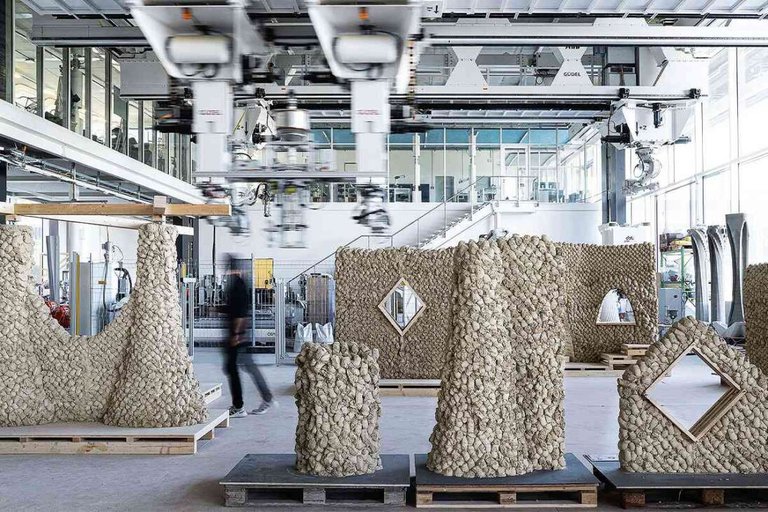3D printing
End of bricklayers in construction? Swiss researchers have developed a clay-based material and an impact 3D printing technique to build structures faster and more environmentally friendly
A team of researchers from ETH Zurich has developed a new construction method that promises to revolutionize the construction sector with sustainability and innovation, being a kind of electric bricklayer.

That is something they have talked about years. Bricklayers are something they want to eliminate but havent.
There are videos of, in addition to giant 3D printers making houses, there are also robots building houses.
This will be the future where people will not need to build houses or even other more complex things.
Inspired by children's games with clay and mud, the process called “impact printing” uses construction robots to fire earth-based materials without the need for cement, making construction more ecological and competitive.
This advancement was made possible thanks to the development of an innovative technology that deposits material at an impressive speed of up to 10 meters per second. No bricklayer can do this.
Unlike traditional 3D printing of concrete, where layers are deposited slowly, the impact printing method works with much higher speed and efficiency.
The growing need for more sustainable solutions in the construction sector was one of the main motivators for the development of the new technique.
Impact printing aims to make sustainable building materials more cost-competitive, which could encourage their large-scale adoption. Researchers at ETH Zurich believe this automated and efficient approach could be a viable answer to reducing the carbon footprint in construction.
The ETH Zurich team has developed a custom printing tool that can be integrated into different robotic platforms. This feature offers flexibility for construction in both traditional locations and more complex terrain. At the Robotic Fabrication Laboratory, the tool was installed on a high-payload gantry system, enabling the construction of structures nearly three meters tall.
Although the structures produced have a mottled texture due to the impact process, the researchers highlight that robotic finishes with environmentally friendly plasters can provide a smooth, high-quality finish.
Another relevant factor is that the process was specially designed to use materials with low incorporated CO2, such as locally excavated earth. The ETH Zurich team developed a specific mixture that includes local secondary materials and a minimum amount of mineral additives, which guarantees strength and stability to the built structures.